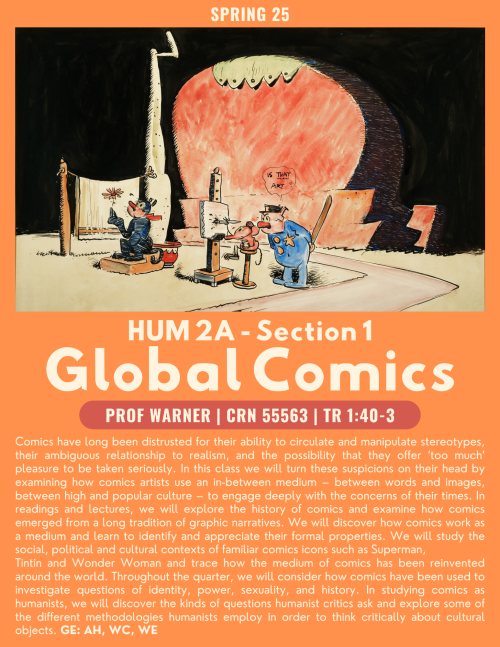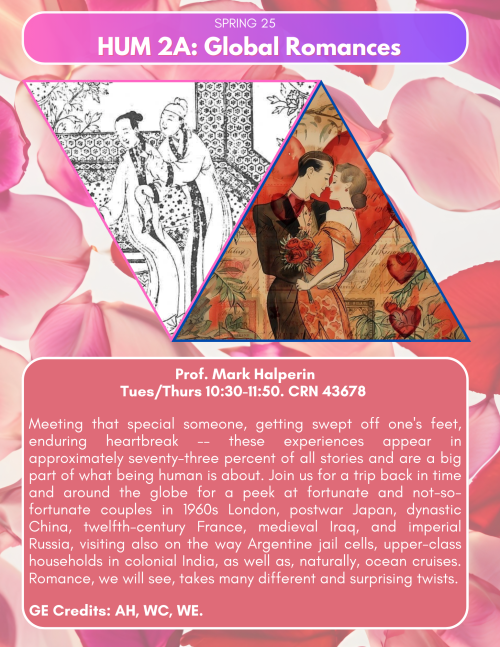Spring Quarter 2025
- For day, time, room, and TA information, see our PDF Schedule or the class search tool https://registrar-apps.ucdavis.edu/courses/search/index.cfm.
- For all courses not described here, please refer to the General Catalog course descriptions: https://catalog.ucdavis.edu/courses-subject-code/hum/
HUM 002A Global Comics
Prof. Toby Warner
Comics have long been distrusted for their ability to circulate and manipulate stereotypes, their ambiguous relationship to realism, and the possibility that they offer ‘too much’ pleasure to be taken seriously. In this class we will turn these suspicions on their head by examining how comics artists use an in-between medium – between words and images, between high and popular culture – to engage deeply with the concerns of their times. In readings and lectures, we will explore the history of comics and examine how comics emerged from a long tradition of graphic narratives. We will discover how comics work as a medium and learn to identify and appreciate their formal properties. We will study the social, political and cultural contexts of familiar comics icons such as Superman, Tintin and Wonder Woman and trace how the medium of comics has been reinvented around the world. Throughout the quarter, we will consider how comics have been used to investigate questions of identity, power, sexuality, and history. In studying comics as humanists, we will discover the kinds of questions humanist critics ask and explore some of the different methodologies humanists employ in order to think critically about cultural objects.
GE Credits: AH, WC, WE.

HUM 002A Global Romance
Prof. Mark Halperin
Meeting that special someone, getting swept off one's feet, enduring heartbreak -- these experiences appear in approximately seventy-three percent of all stories and are a big part of what being human is about. Love and love stories abound these days and always have -- or so it would seem. Romance and romantic narratives, though, vary greatly according to time and place. This course goes beyond contemporary America and explores this variety. We will peek at fortunate and not-so-fortunate couples in 1960s London, postwar Japan, dynastic China, twelfth-century France, medieval Iraq, and imperial Russia, and visit Argentine jail cells, upper-class households in colonial India, and ocean cruises. Our authors and filmmakers include men and women, the living and the dead, and the anonymous and the renowned. What joins them is that their stories have endured, while most love narratives have not.
We will ask, what is the basis of affection in these stories? Is love a blessing, a disease, a curse? How is romance tied with power and hierarchy, with adultery and marriage? What place do lust, deception, self-deception, danger, and violence have in romances? How do men and women conceive of love differently, and how do these differences vary across cultures? What tests do lovers encounter and how do they pass them? What do these romances say about innocence and experience, about individual autonomy and dependence? How do families and larger social forces affect romances? What are the ethics of love? Are there ethics in love? Do these accounts teach us lessons? Addressing these questions will take us into a range of disciplines, such as literary studies, history, gender studies, and anthropology.
GE Credits: AH, WC, WE.

